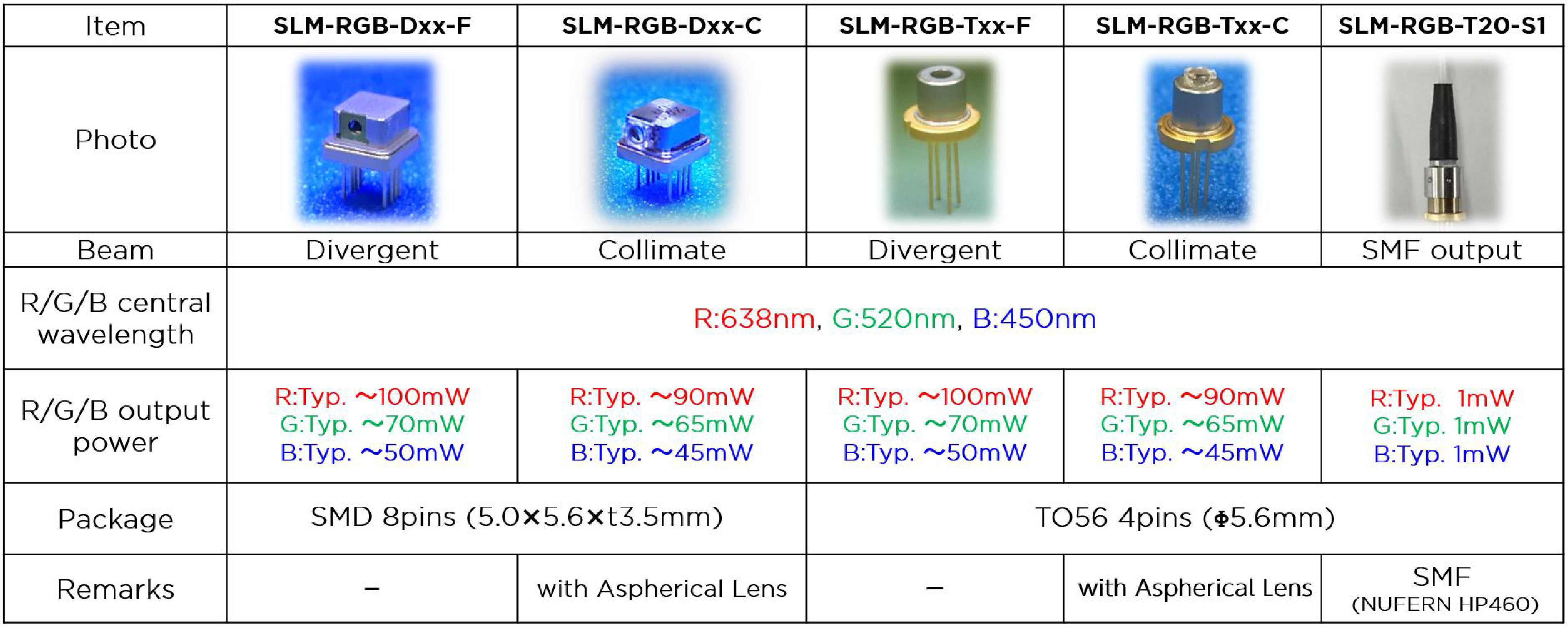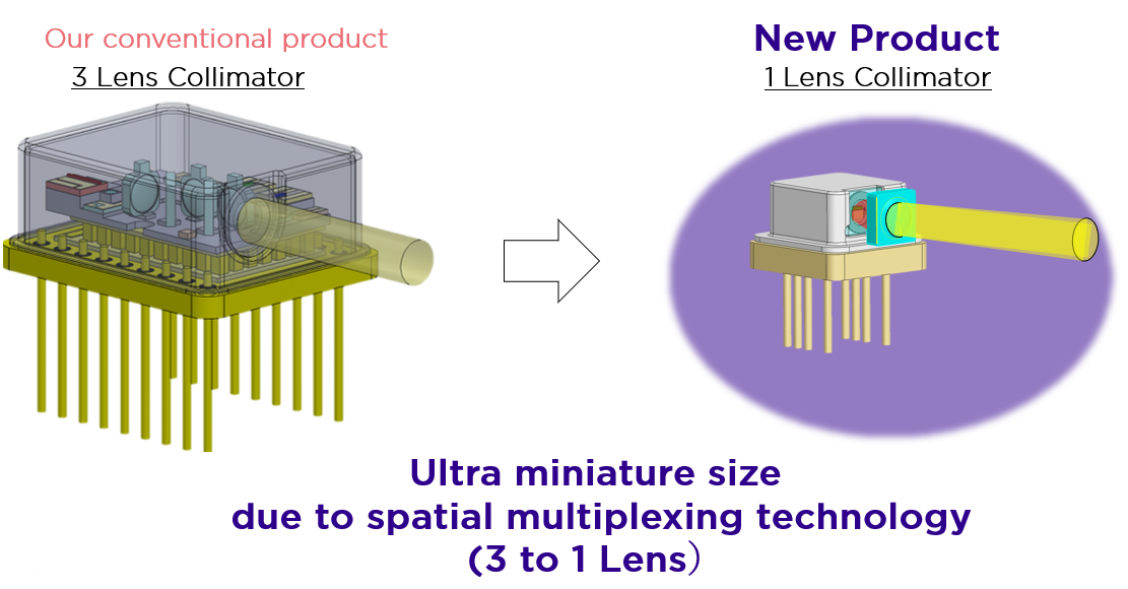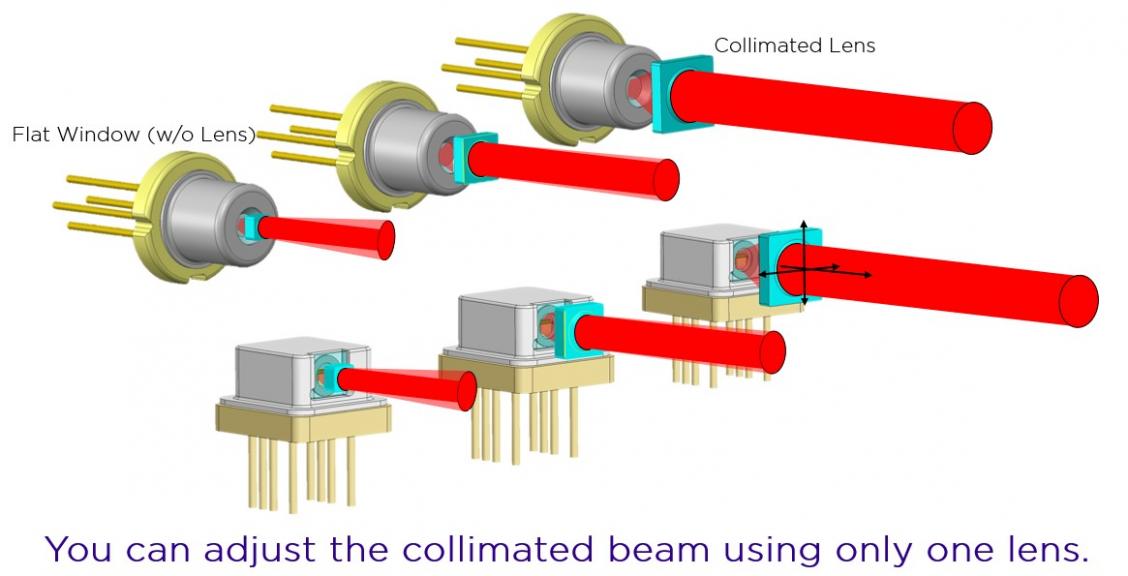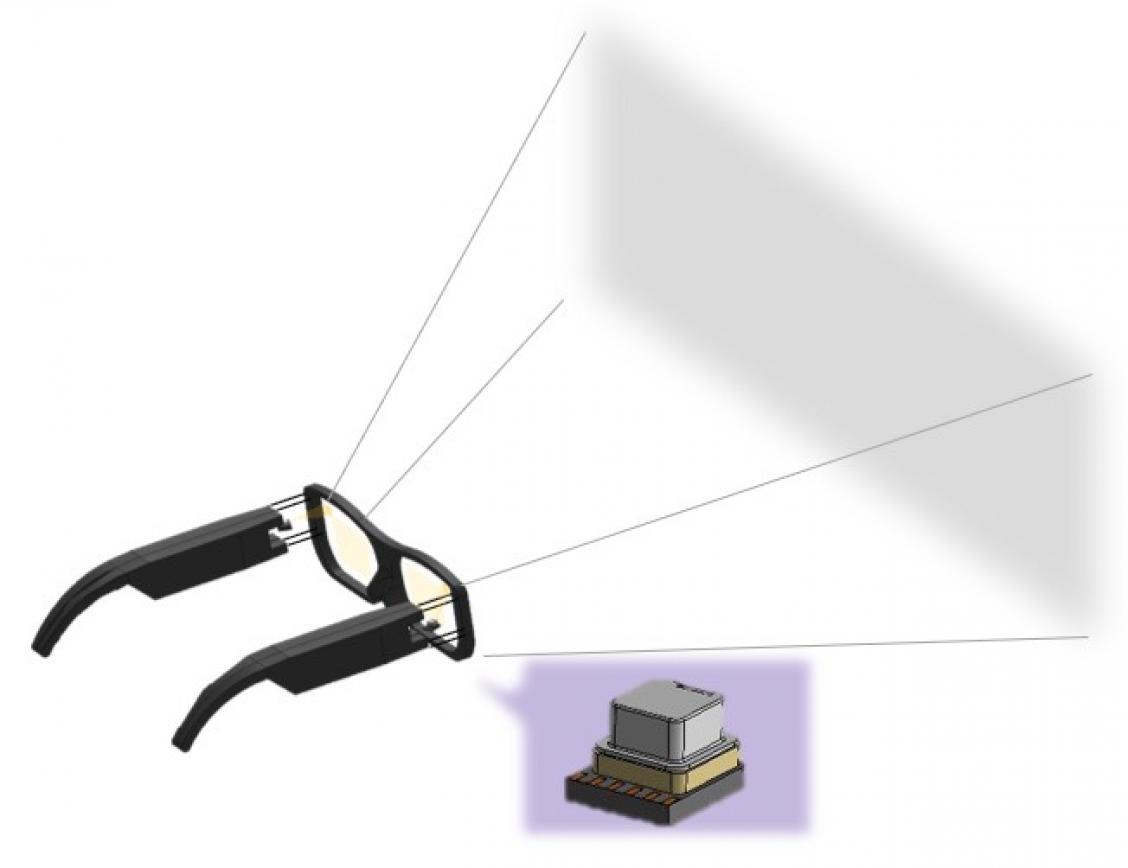
RGB Laser Modules
A display that uses a laser as a light source combines red (638 nm), green (520 nm), and blue (450 nm) laser beams, which are the three primary colors of light. This makes it possible to achieve full-color rendering.
Common methods for combining laser light include using collimating lenses and wavelength multiplexing filters for spatial coupling, or using optical waveguides, but these methods have problems with optical loss, cost-up, and miniaturization. We have developed spatial multiplexing technology that does not use lenses for R, G, and B laser beam multiplexing by applying high-precision mounting technology cultivated through the development of optical communication products. By reducing the number of optical components, we have achieved the world‘s smallest size (l5.0 x w5.2 x t3.3 mm) to the best of our knowledge.
Our original spatial multiplexing method minimizes loss due to optical multiplexing, so we have products ranging from low to high output. It can also be applied to the retinal imaging and waveguide lens method, which are considered promising in the future AR glasses and unique XR products.
The RGB multiplexed divergent beam light can be collimated by the customer using a single lens to obtain the optimum light source for Laser Beam Scanner (LBS) and illumination applications.
Product Lineup

Technology

Easy Assembly

Image of RGB-LD module mounted on AR glasses

